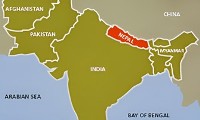REPORT
By Yamanta Raj Niroula
International Correspondent
Kathmandu, Nepal
Nepal’s Hydropower Landscape:
Strengths, Vulnerabilities, and Growth
- Introduction
Nepal is home to one of the richest hydrological systems in the world, that provide significant opportunities for hydropower development. The country’s rugged landscape and its rivers, which originate in the Himalayas, create ideal conditions for harnessing hydroelectric energy. Given the rising concerns about climate change and global energy supply issues, hydropower emerges as not only a clean and renewable energy option but also a key player in ensuring energy sustainability and economic growth.
The benefits of hydropower are numerous. It requires very little fuel, produces low greenhouse gas emissions, has lower operational costs, and lasts a long time, making it a sustainable and economically sound energy solution. From small-scale micro-hydro installations that bring electricity to isolated rural areas to large utility plants that support national grids and even export energy, Nepal’s potential for hydropower spans a wide range of technologies and locations, leading to significant improvements across various sectors.
This report provides an in-depth analysis of Nepal’s hydropower industry, outlining the current situation, major ongoing projects, and the broader factors influencing the nation’s development. It examines both recent successes and the challenges posed by geopolitical changes, as well as environmental and technical issues.
- Nepal’s Hydropower Landscape
The electricity sector in Nepal mainly relies on hydropower, with approximately 90% of its energy generated by run-of-river (RoR) plants. These systems harness the natural flow of rivers and require little to no storage, which suits the country’s mountainous landscape and its commitment to renewable energy development.
Out of Nepal’s estimated 83,000 MW theoretical hydropower capacity, approximately 43,000 MW is considered economically viable. Yet, as of 16 July 2025, only 175 operational hydropower plants, representing a combined licensed capacity of 3,388.744 MW, have been commissioned (Department of Electricity Development (DOED), 2025). This substantial underdevelopment highlights a persistent gap between potential and realization. In response, the Government of Nepal has intensified its hydropower development efforts to meet surging domestic demand and to capitalize on regional electricity trade opportunities. According to the DoED, 259 additional hydropower projects, amounting to 10,691.546 MW in total capacity, are currently under construction or awaiting financial closure. In addition, hydropower projects with a combined capacity of 17,000 MW are under consideration either in the feasibility stage or awaiting government approval for Power Purchase Agreements (PPAs).
Hydropower’s dominance in Nepal’s energy mix is both a strategic strength and limitation. The monsoon season (June to September) yields high river flows, allowing them to generate excess power and become temporarily energy surplus. On the other hand, the dry season (December to March) is characterized by low river discharge, leading to generation shortages and increased reliance on electricity imports. During these periods, Nepal imports electricity from India to meet up to 25% of it’s peak demand.
More…
To read entire report, click here
How to cite this work: Niroula, Y. R. (2025). Nepal’s Hydropower Landscape: Strengths, Vulnerabilities, and Growth; Project Management Update from Nepal, report, PM World Journal, Vol. XIV, Issue VIII, August. Available online at: https://pmworldjournal.com/wp-content/uploads/2025/08/pmwj155-Aug2025-Niroula-Project-Management-Update-from-Nepal.pdf
About the Author

Yamanta Niroula
Kathmandu, Nepal
![]()
Yamanta Niroula is a seasoned Project Management Professional with over 17 years of extensive experience in engineering, infrastructure development, and project management across diverse global environments. His expertise includes project planning, procurement, contract management, stakeholder coordination, and risk mitigation, with a strong focus on executing projects in remote and developing regions under complex operational conditions.
Yamanta holds a Bachelor of Engineering in Civil Engineering and a Master of Arts in Rural Development, along with a Diploma in Civil Engineering. He is a certified Project Management Professional (PMP®) and an active member of the Project Management Institute (PMI) since 2010.
Yamanta has extensive experience in project management, successfully overseeing all stages of construction projects from initial planning to final evaluation. He specializes in managing complex processes, including procurement, contracting, and execution, while maintaining efficiency and regulatory compliance. By staying updated on industry standards and advancements, he has ensured that projects are forward-thinking, sustainable, and adaptable to changing environments.
Yamanta has successfully managed large-scale infrastructure projects, including roads, electrical infrastructure, wastewater treatment plants, logistics facilities, and disaster recovery programs. He has served in various capacities as Project Controls Specialist, Design Manager, Planning Manager, Engineer and Project Manager across international organizations and UN agencies in Nepal, the Maldives, Singapore, Afghanistan, the Philippines, Nigeria, Yemen, Sudan, and Ethiopia.
He has been responsible for project design, planning, execution, and control, ensuring timely delivery, budget adherence, and quality assurance while enhancing overall program outputs.
Yamanta lives in Kathmandu, Nepal and can be contacted at niroulayr@gmail.com
View his full correspondent profile at https://pmworldlibrary.net/yamanta-raj-niroula/
To view other works by Yamanta Ray Niroula, visit his author showcase at https://pmworldlibrary.net/authors/yamanta-raj-niroula/









